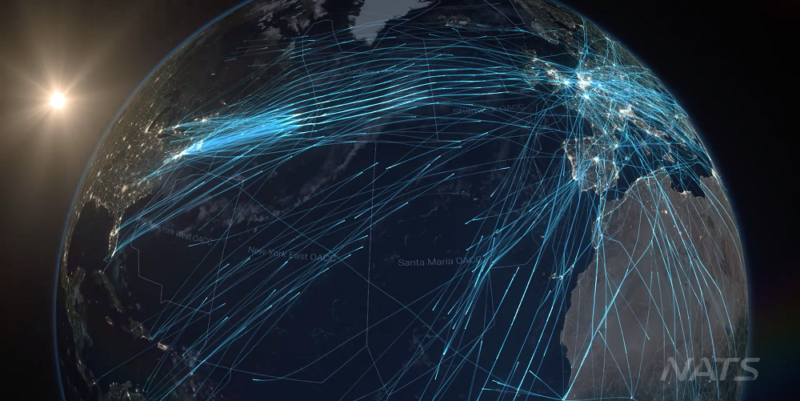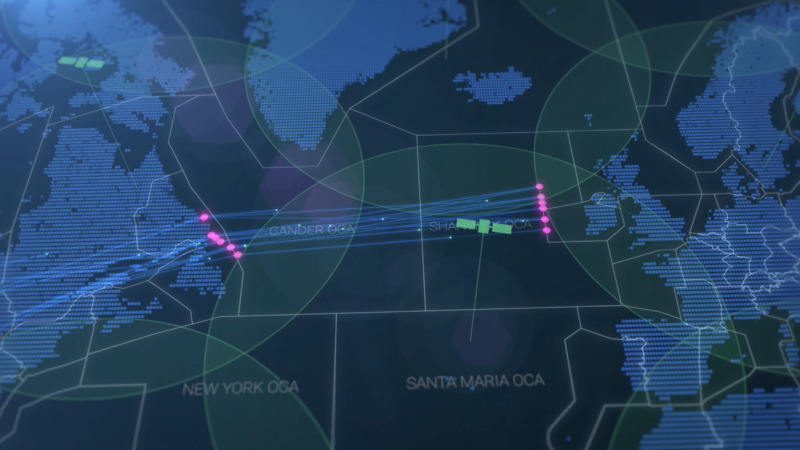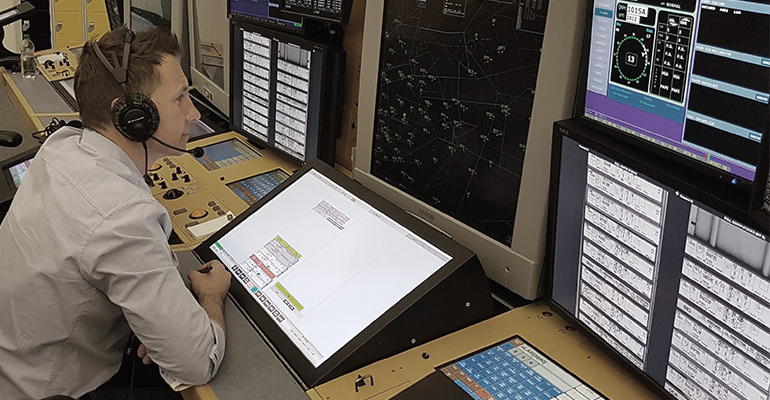Getting ready for a space-based revolution
7 March 2019At the end of March, a revolution will begin in the skies over the North Atlantic, as for the first time in the history of air travel, earth orbiting satellites will be used to monitor and manage flights in near real-time.
It’s a move that is going to totally transform the service we can offer to oceanic air traffic, delivering a step-change in safety, capacity and operational efficiency, including significant savings in carbon emissions. It might sound like hyperbole, but this really will be one of the biggest technological advances in air traffic management since the introduction of radar 80 years ago.
Today, aircraft flying across the Atlantic have to follow prescribed routes at set speeds and heights because we only receive position reports from them every 14 minutes. As a result, separation standards have to be far greater than over terrestrial airspace, with at least 30 nautical miles separating aircraft laterally and 40 nautical miles longitudinally. This in turn reduces the available space for aircraft to fly the best and most fuel and carbon efficient routes.
The trials that begin at the end of this month will see us go from that environment to one where we’ll receive aircraft position reports every 5-8 seconds.
That’s a total game changer that immediately delivers a major safety improvement through faster conformance monitoring (ie is a plane doing what we think it should be), while also boosting airspace capacity on the optimum routes by allowing us to begin reducing separation standards down to just 14-17 nautical miles.
And demand for transatlantic travel is growing all the time. Last year 500,000 flights crossed the North Atlantic, making it the world’s busiest piece of oceanic airspace and Europe’s transatlantic gateway. That demand is expected to reach 800,000 flights by 2030, and today’s rigid track structure just won’t be able to deal with that kind of demand without creating significant flight delays. The need to meet that demand, together with the clear safety benefits is what makes this so significant.
With the last satellite now in place, teams at our Prestwick control centre, and across the Atlantic at NAV CANADA and Aireon, are now working to ensure we have everything in place for the trials to begin in a few weeks time. From engineering and air traffic control through to our training and our analytics teams, it’s a huge team effort
And while it might start over the North Atlantic, I can’t see how the work we are currently doing together won’t lead to a total transformation in air traffic management around the world. For the first time in history, Aireon is offering truly global aircraft surveillance, including across the most inhospitable and hard to reach places on Earth. The benefits of that are obvious.
It’s an incredibly exciting time and when combined with all the other things we’re doing across NATS to transform our systems and technology – from digital control towers and airspace modernisation through to the roll out of a new flight data processing system – it really does feel like we’re at the beginning of a total transformation in air traffic management.
Next week, together with NAV CANADA, I’ll be presenting about the upcoming North Atlantic trials at the World ATM Congress. I hope to see you there.
Comments
Please respect our commenting policy and guidelines when posting on this website.






07.03.2019
10:47
Dani Glikmanas
Which satellite network will be used? INmarsat, Iridium ou another?
07.03.2019
11:02
Alfonso de la Vega S
Dear Julitte, we expect to do something similar as you in the next future here in Chile with al that air traffic flying to Easter island and to Australia and new Zeland, So please let us know about all your experience. Sincerely
Alfonso de la Vega S.
DGAC – Chile.
08.03.2019
08:54
Paul Beauchamp
Senior Communications Manager, Brand PR & Marketing CommunicationsHi Dani – we’ll be using the Aireon data via the Iridium Next constellation. Some back background reading here if you’re interested: https://www.nats.aero/static/the-race-to-space/
08:54
Paul Beauchamp
Senior Communications Manager, Brand PR & Marketing Communications11.04.2019
11:43
EWAN SMITH
Hi Paul, will this lead to an intensification of flights in the overland elements of the flight paths as well? Thanks.
03.05.2019
19:46
Matilda
Such a great review. I feel happy to see this article.